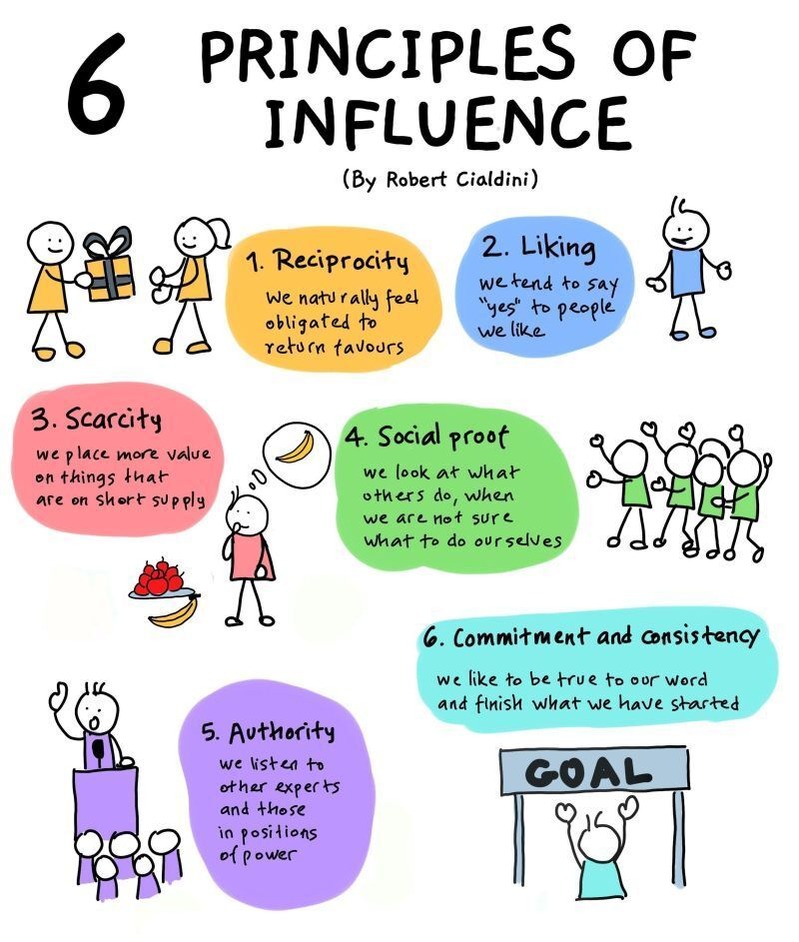The Art of Influence: Harnessing Psychological Principles for Persuasion

In a world shaped by communication and interaction, the ability to influence others is a valuable skill that can open doors, forge connections, and facilitate positive change. Whether you’re seeking to persuade a colleague, negotiate a deal, or inspire action, understanding the psychological principles behind persuasion can empower you to become a more effective communicator. In this blog post, we delve into the art of influence, exploring key psychological principles and practical strategies for mastering the subtle nuances of persuasion.
Understanding Psychological Principles of Persuasion
Psychologists have long been intrigued by the dynamics of persuasion, seeking to uncover the underlying mechanisms that influence human behavior. One of the most influential theories in this field is Robert Cialdini’s “Six Principles of Influence,” which provides a framework for understanding the psychology behind persuasion:

1. Reciprocity: The principle of reciprocity suggests that people feel obligated to repay others for acts of kindness or generosity. By offering value or assistance to others without expecting anything in return, you can create a sense of indebtedness and increase the likelihood of compliance.
2. Authority: The principle of authority highlights the tendency of individuals to defer to experts or figures of authority. By establishing credibility and expertise in a given domain, you can enhance your persuasive influence and sway others to adopt your perspective or recommendations.
3. Social Proof: The principle of social proof emphasizes the power of social validation and conformity. People are more likely to be influenced by the actions and opinions of others, particularly when they perceive those others as similar or credible. By highlighting social consensus or providing evidence of others’ behavior, you can leverage social proof to bolster your persuasive arguments.
4. Consistency: The principle of consistency suggests that people have a strong desire to maintain alignment between their beliefs, attitudes, and actions. By eliciting small commitments or securing voluntary agreements, you can pave the way for larger compliance and foster a sense of commitment to a particular course of action.
5. Liking: The principle of liking underscores the importance of interpersonal attraction and affinity in persuasion. People are more receptive to messages and requests from individuals they know, like, and trust. By building rapport, demonstrating similarity, and expressing genuine interest in others, you can enhance your likability and increase your persuasive influence.
6. Scarcity: The principle of scarcity highlights the psychological impact of limited availability or exclusivity. People are more motivated to pursue opportunities or resources that are perceived as scarce or in high demand. By emphasizing scarcity through time-limited offers, exclusive access, or limited quantities, you can heighten perceived value and stimulate action.
Practical Strategies for Persuasion
Armed with an understanding of these psychological principles, you can employ a variety of strategies to enhance your persuasive influence in interpersonal interactions, negotiations, and communication contexts. Here are some practical tips for harnessing the art of influence:
1. Establish Credibility: Demonstrate expertise, authority, and trustworthiness in your communication by citing relevant credentials, sharing relevant expertise, and providing evidence to support your claims.
2. Build Rapport: Foster a positive rapport and connection with your audience by actively listening, demonstrating empathy, and finding common ground. Show genuine interest in others’ perspectives and seek to understand their needs and concerns.
3. Use Social Proof: Highlight examples of social consensus or provide testimonials, reviews, or endorsements from satisfied customers or peers to reinforce the validity and desirability of your message or proposition.
4. Create Scarcity: Utilize scarcity to create a sense of urgency or exclusivity around your message, product, or offer. Emphasize limited-time promotions, exclusive access, or limited availability to motivate action and stimulate demand.
5. Appeal to Emotions: Tap into the power of emotions by crafting persuasive messages that evoke feelings of excitement, happiness, fear, or empathy. Use storytelling, vivid imagery, and emotional language to engage your audience on an emotional level and inspire action.
6. Frame Messages Effectively: Pay attention to the framing of your messages and position your arguments in a way that resonates with your audience’s values, beliefs, and aspirations. Highlight the benefits and positive outcomes associated with your proposition while addressing potential objections or concerns.
Mastering the Art of Influence
Mastering the art of influence requires a nuanced understanding of human psychology and effective communication strategies. By leveraging psychological principles such as reciprocity, authority, social proof, consistency, liking, and scarcity, you can enhance your persuasive influence and achieve your communication objectives more effectively. Whether you’re seeking to persuade, negotiate, or inspire, the art of influence offers valuable insights and techniques for navigating the complexities of human interaction and achieving successful outcomes. Embrace these principles, hone your persuasive skills, and unlock the power of influence to shape positive change and create meaningful connections in your personal and professional life.





Responses